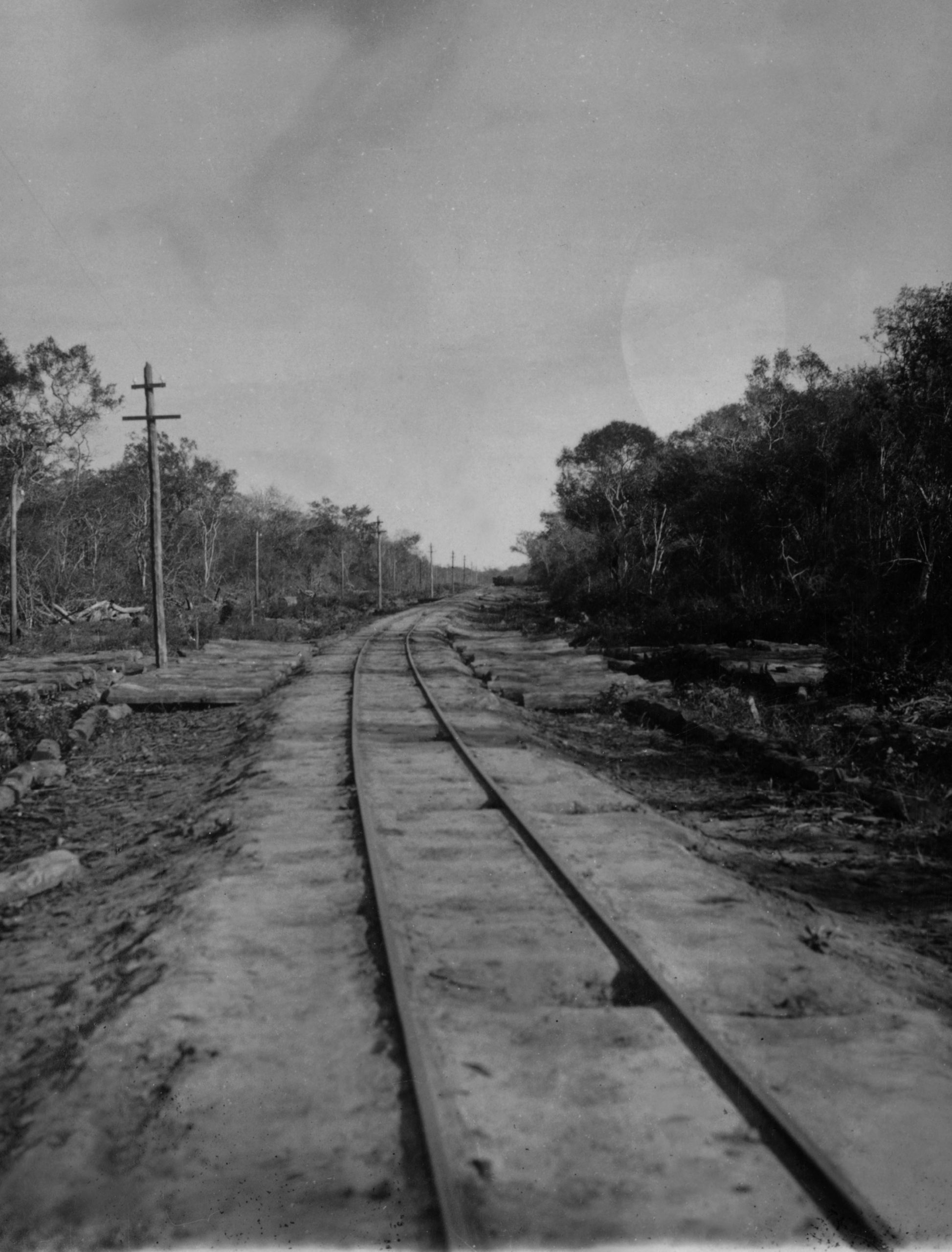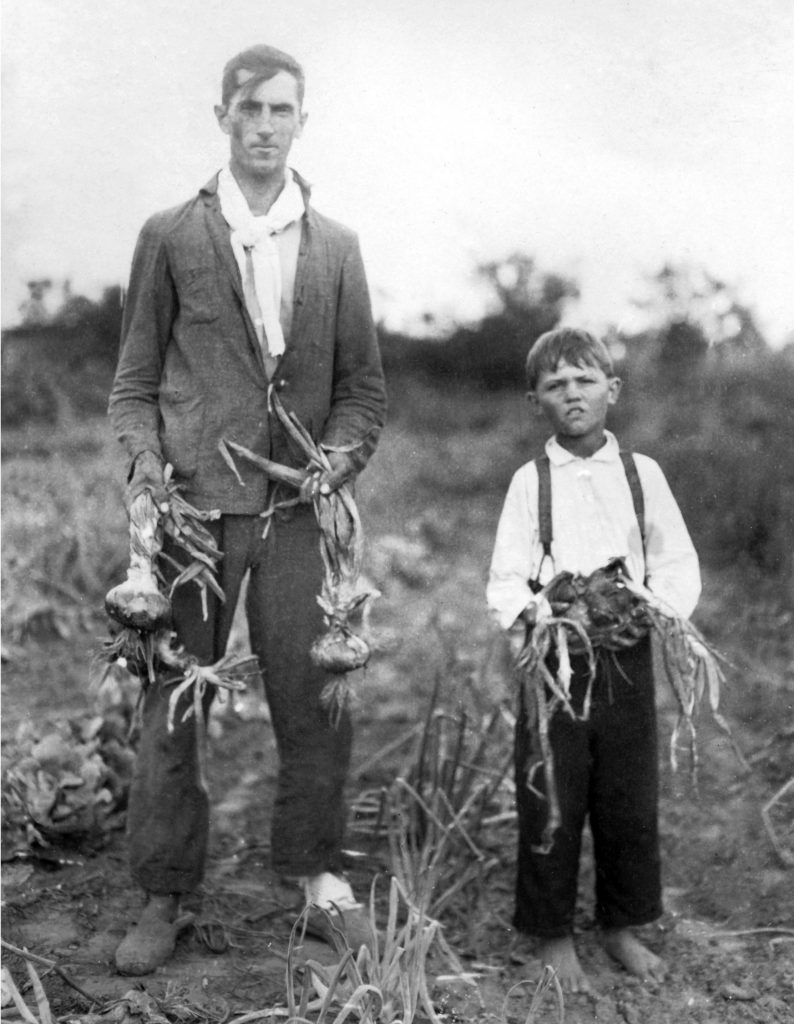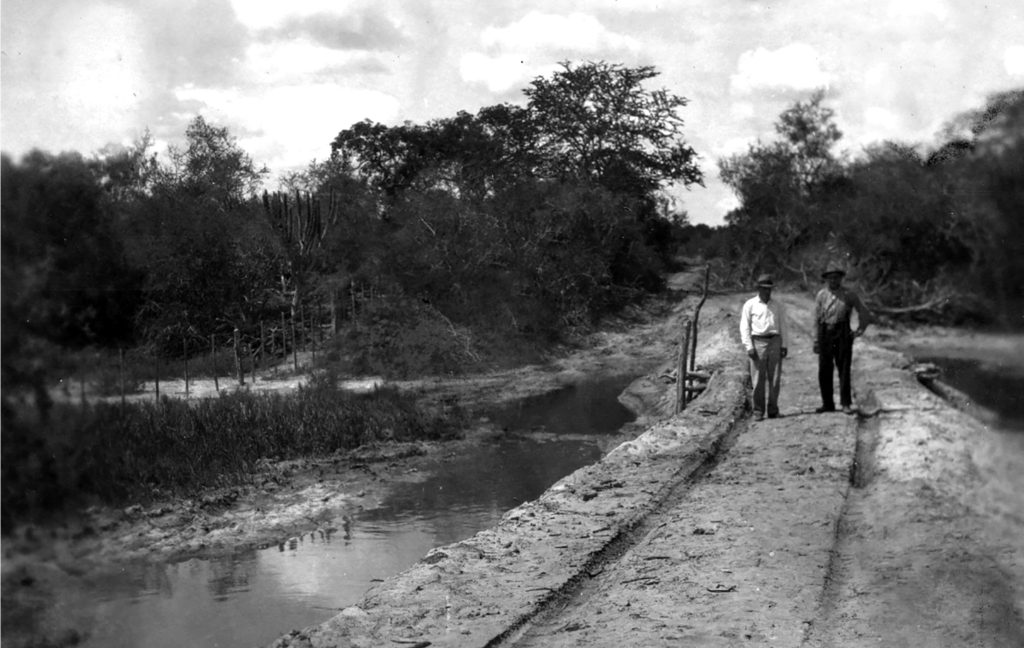
The Casado Railway: Mennonites in the Chaco
Burt Klassen Kehler
In 1921, the President of Paraguay posed a question to the Mennonite land investigators after they had returned to Asunción from the Chaco: “… What do you think, will your people come to the Chaco to settle?” They responded: “… We believe they will come provided the railway is built up to the settlement area…”1
Fred Engen
Tensions arising with the Canadian government during the First World War encouraged some Mennonites from Manitoba and Saskatchewan to explore the possibility of settlement in Mexico and South America. Initially, within South America, they focused their attention on the countries of Argentina and Brazil; however, these states would not grant their requested privileges. In contrast, the Paraguayan government offered to grant the Mennonites all their requested privileges. In 1919 Fred Engen, an American with Norwegian roots who had tried his luck being a farmer and as an agent but had not registered a lot of success in either of these endeavours, came in contact with Mennonites in North America and fell in love with their principle of pacifism. In that same year, Engen travelled to Paraguay on behalf of the Mennonite migration project. During this trip a number of people tried to talk him out of his ambitious adventure into the Chaco, telling him that he would not make it. But Engen was a stubborn man. He planned on exploring settlement options for the Mennonites on that white spot on the map of Paraguay: the Chaco. As he deposited his money in the bank in Asunción before taking a ship to Puerto Casado, the bankers in Asunción tried to convince him not to make that trip into the ill-reputed Chaco region, known as the “green hell.” They assured him that he would never survive such an adventure. But Engen entered the Chaco accompanied only by some Toba Indians on the back of a few mules. It is said that Engen went during the best time of the year for seeing the natural beauty of the Chaco. They traveled until they found wonderful lands, which in Engen’s eyes, were ideal for Mennonite settlers to engage in wheat production. A month after he started his journey, Engen was back in Asunción. His first act was to send a telegram to Samuel McRoberts, who had taken an interest in Mennonite settlement in Paraguay. Its content was short but convincing, stating: “I found the promised land.”

Carlos Casado Del Alisal
The land where the Mennonites intended to settle was owned by Carlos Casado del Alisal. To understand the magnitude of properties or estates that Casado owned, it is important to dig into the background of his company: The S. A. Carlos Casado Ltd. After the War of the Triple Alliance (fought between Paraguay and the alliance of Argentina, Brazil, and Uruguay from 1864 to 1870), the land and population of Paraguay was devastated. Rebuilding the country from the ground up was one of the first things that had to be done. The first obstacle was finances. Estates, however, were one of the few ways that Paraguay could raise money. Since Paraguay had many estates, the government created laws that opened the doors to investors who intended to buy huge amounts of estates.
Carlos Casado del Alisal was one of those investors. Born in Villada, Palencia (Spain), Carlos Casado was different then lots of Spaniards. He was one of the few Spanish immigrants who knew how to make his ‘south American dream’ come true. Before he bought his estate in the Paraguayan Chaco, he founded a bank, built up a railway, and contributed to the beginning of wheat production in the Rosario area in Argentina (he is considered one of the pioneers of wheat production in the southern hemisphere). The estate he acquired in the Chaco was estimated to be 7,500,000 hectares (approximately 18,700,000 acres), which equals the surface of the Netherlands. It reached from the Paraguay River through to the Pilcomayo River. The main target was the exploitation of tannin, that was taken from the hard woods of the ‘quebracho colorado’ – Schinopsis balansae. For that reason, he founded the city of Puerto Casado, built the tannin industry (an export product), and developed a railway on his estate. In a productive year, the trains of Casado would transport up to 70,000 quebracho logs from the interior of the Chaco to the tannin industry in Puerto Casado.
Mennonites from Canada
In 1921, the first delegation of Mennonites was designated to inspect the land sought out by Engen and McRoberts. This land had to be acquired from the S. A. Carlos Casado company which owned the territories. The delegation consisted of six men, including Jakob Dörksen from the Chortitza Church, Bernhard Töws, and Isaak Funk from the Sommerfeld Church (both churches from Manitoba), the ministers Jakob Neufeld and Johann Friesen from the Saskatchewan churches of Rosthern, and the so called “Mennonite lawyer,” Johann Priesz, from Altona in Manitoba.
Bernhard Töws wrote about this trip in his diary, explaining in detail why the Casado company, the land, and local infrastructure appeared as a paradise for Mennonite settlers. He wrote that Casado brought them to the port of Puerto Casado on his private ship, and even gave the delegates private cabins. Töws described the schools of the city, and all the reasons why Paraguay would be a good fit for Canadian settlers.
When the Mennonite delegation started their adventurous journey into the Chaco wilderness, they had the advantage, in comparison to Engen’s trip, that they could use Casado’s railway for the first 60 kilometres. Of course, this was not a normal railway like those found in Canada. The railways in Argentina and Paraguay were normally built on the estates of the tannin magnates in the Chaco region. Typically, they started at a port on the banks of a river and entered into the almost unlimited surface of the owners’ land. These railways were so called ‘narrow gauge railways’ meaning that they have a narrow width in comparison to the ‘standard gauge railway.’ But this small train and the railway of the Casado Company turned out to be a lifesaver for Mennonites arriving from Canada. The significance of the railway can be summarized as follows: it was a necessary condition to make Mennonite colonies feasible; it was the only means by which the settlements were connected with the outside world; it was the only way of supplying the colonies; it was the means for the sale and transport of agricultural products to the markets; and it offered employment for the settlers.

Lapses in Construction
The contract for the Mennonite Chaco land deal concluded between the American settlement company, the Intercontinental Company (founded by Samuel McRoberts and responsible for moving the Mennonite settlers from Manitoba and Saskatchewan to the Paraguayan Chaco), and the Casado Company included the construction of a railway up to the settlement area. It was clear and self-evident that if a settlement in the distant interior of the wilderness was to emerge, a railway had to be in place. However, this railway became a complicated affair in the prospective colonization of the Chaco. The American company was responsible for the emergence and the initial development of the settlement; the Casado Company in return, was responsible for the extension of the railway to the colony. Once the Chaco became the targeted destination of the settlers, the only option was to migrate into its interior, approximately 170–180 kilometres from the Paraguay River, as this land was better suited for agriculture.
During 1927 approximately 1743 Mennonites arrived in Puerto Casado from Canada. By that time, they already wanted to settle on their farms but the surveying of the estates had not been completed. Instead they had to live in camps in Puerto Casado for 16 months. Initially, six families departed into the wilderness on 12 February 1927. In 1921 when the Mennonite delegation came to visit the Chaco the railway went until the kilometres 60 mark and they requested that it should be extended until the location of their proposed settlement site. One can imagine the disappointment when these families travelled into the wilderness and could only go by train for 77 kilometres until the railway ended at a point called ‘Pirisal’. From that spot they had to travel another 100 kilometres on wagons pulled by oxen.
The most remarkable extension of the railway was made between 1927 to 1928. A total of 58 kilometres of railway was built during this time. That was in large part due to the work of the ‘Corporación Paraguaya’ (the name adopted by the Intercontinental company in Paraguay). The total length by that time was 135 kilometres of railway. But negotiations with the Casado Company to extend the railway faster did not succeed. On 18 December 1926, Mr. J. C. Marsh, an appointee of the North American settlement company in Asunción, wrote the following report home: “The railway is part of the tannin factory operation. The Casado Company builds the railway where most of the Quebracho trees are found. So, if this tendency persists, the result will be that the railway will not get to be near the settlement area. We want to negotiate about this with the Casado Company. Before we make the second payment for the land purchase and before the Mennonites select their land for settlement, it must be clear that the railway is [to be] built up to the settlement area… if the distance from the Paraguay River does not exceed 200 kilometres. The Casado Company will certainly be prepared to cooperate provided it can be assumed with certainty that the settlement will take place…”2

However, the Casado Company did not cooperate as the railway’s direction did not point to the Chaco settlements anymore. Instead it pointed to the richer quebracho woods. In 1929 the railway concluded at Kilometre 145 (later followed a short extension to Kilometre 160 for the purpose of the Chaco war that did not bring the settlers any advantage). At kilometre 145 a train station was built. This train station was the only gate to the exterior. Despite the fact that the ‘Corporación Paraguaya’ had made contracts and paid in advance so that the railway would be built faster, nothing could make the Casado Company finish the railway all the way to the settlements. The following report by Alfred A. Rogers, the director of ‘Corporación Paraguaya’, confirms these intentions “…The railway extended into the Chaco wilderness is built as quickly as Paraguayan conditions allow. We have concluded a new contract with the Casado Company… Now, the Casado Company receives a payment whenever it has pushed the track forward a distance of 15 kilometres. The earlier contract provided for one payment once a year. The new payment will speed up construction…”3 In reality, nothing sped up the construction of the railway to the settlements, which made settling into the interior of the Chaco almost impossible.
Transportation Odyssey
Farmers that wanted to sell their products had to transport them by ox-wagons (at a rate of 3–4 kilometres per hour) to the train station. A wagon could normally carry 800–1200 kilograms and every wagon that went to the station was obligated to bring flour back to the villages. The difficulty of transportation in the Chaco can be demonstrated with the following examples. In October 1928, the co-director of the Corporación Paraguaya, Rodney N. Landreth, wrote from Paraguay to his superiors in the United States the following concern: “…We are having enormous problems with transportation in the Chaco. This particular issue has slowed the progress of the villages. Every month around 300 bags of flour have to be transported from the train station because the fields don’t produce enough food for the families. This trip from the villages to the train station takes around a week of time with wagons of oxen if everything goes well; if it’s rainy it can take up to two entire weeks. In some cases, we’ve had villages where half of the oxen existing in them couldn’t work the land due to exhaustion…”4 The distance from the villages to the train station was around 70 to 75 kilometres, depending on where the village was located. The other fact that made this task so difficult was that the boys who actually should work the land, had to travel to get the vital flour for the families. According to Peter K. Kauenhowen, a village could send its boys on 36 occasions to the station. Based on that, you can estimate how many weeks they were not home.

It was not only the time it took to get flour from the train station that contributed to the early hardships for Mennonites in Paraguay. For Mennonites travelling to Asunción, it took a significant amount of time to get to the capital of Paraguay and back. To travel from the villages to the train station took approximately 1 to 4 days. From there Mennonites had to travel a day to Puerto Casado and then another 1 to 2 days to arrive in Asunción. Abram W. Hiebert, a businessman who traveled back and forth between the villages and Asunción to negotiate business contracts for the Menno Colony, shared that due to a number of setbacks (which were also not out of the ordinary), one of his trips took a little longer than normal. This time his trip to Asunción and back took three weeks and because communications were so meager, when he arrived back home he was told that his son had become sick, died, and was buried while he was travelling.5
Abram U. Kehler, who settled in the region, described the difficulties faced by Mennonites without railway access. He gave his anecdote the title, ‘The problem with the beans’: “We had harvested three bags of beans and had bought flour and fabrics for the family on credit at Mr. Krahn’s store in Reinland. We transported them to the train station kilometres 145 where Mr. Troxler, the administrator, bought some and rejected the rest, telling us that they were full of bugs. We couldn’t leave before we received flour for the villages which had to arrive from Puerto Casado, so we had to wait for three entire days. So, I hired some Indians to help me sort out the good beans from the bad ones. Suddenly Mr. Troxler passed by seeing what we were doing. He said they weren’t as bad as he had thought and took them all.”6

It would take at least three decades before this issue could be solved. The conditions of transportation were so bad that even the Mennonite Central Committee (MCC) at one point offered to help in a project to extend the railway. They helped to improve the road from the train station to the settlements in the decades of 1940 and 1950 by sending machines and technical support. In 1950 during a session between the leaders of Menno Colony (called Sommerfeld by then) and two men from MCC, Cornelius J. Dyck and Cornelius P. Lohrenz, MCC revealed that it was willing to provide $5000 for the railway extension.7 The Casado Company, once again, was willing to take over construction. But the project never progressed; nonetheless, a little light of hope started to shine with a proposal to construct the Transchaco Highway. It took, however, until 1961 for this highway, which connects Loma Plata, Neuland and Fernheim (Mennonite colonies) with the rest of Paraguay, to be completed. The odyssey had finally ended!
- Martin W. Friesen, New Homeland in the Chaco Wilderness (Loma Plata: Historical Committee of the Menno Colony, 2009), 211. ↩︎
- Ibid., 212. ↩︎
- Ibid., 215. ↩︎
- Ibid., 444. Translated by the author. ↩︎
- Gerhard Ratzlaff, Die Ruta Transchaco: wie sie entstand (Asunción: [s.n.], 1998), 39. Translated by the author. ↩︎
- Letter from Abram U. Kehler, translated by the author. ↩︎
- Protocol of a session of the Chortitzer Komitee dated 22 June 1950. Translated by the author. ↩︎
